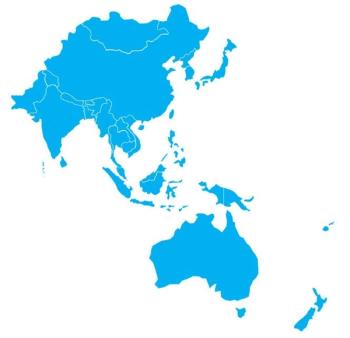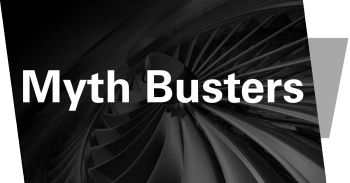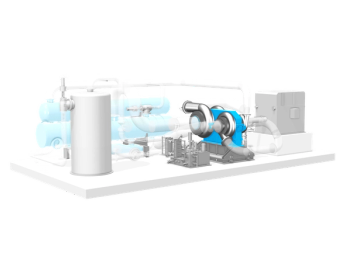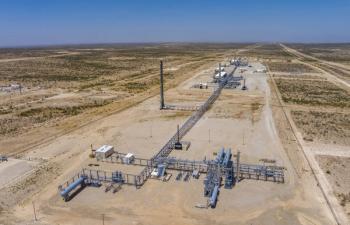
- March/April 2021
Solving U.S. Transmission
A stable renewable-rich grid needs transmission build-out, and incentivized ancillary services.
The U.S is in second place globally in installed wind capacity. Solar is catching up rapidly. According to Industrial Info Resources, 80% of the 214 GW of new generation planned over the next five years will be renewables.
But there is a big problem. The transmission grid can’t cope with the influx. Wind and solar resources are often far from load centers. Power lines don’t have enough capacity to carry all the energy from those facilities to markets. Efforts to build high voltage superhighways face enormous challenges. Federal Regulatory Energy Commission (FERC), as well as state and local rules, make it difficult to gain the right-of-way approvals, licenses, and permissions. Anyone able to tackle that labyrinth faces stiff opposition from almost every community along the route. That’s why some estimate it’s ten times more expensive to build infrastructure in the U.S. compared to other parts of the world.
Meanwhile, states play one-upmanship when it comes to Renewable Portfolio Standards (RPS). One says it will reach 30% renewables by 2025, another says 50% by 2030, and someone else ups the ante with a target of 100% by 2040. These lofty goals may make politicians feel warm and fuzzy, and garner votes, but they are steeped in unreality. They have zero chance of success unless they face up to these challenges:
- The need for a massive overhaul of the U.S. transmission network with new high voltage direct current (HVDC) lines, as well as upgrading or replacing the aging transmission lines currently in place.
- The lack of financial incentives for utilities and generators to provide ancillary services such as synchronous condensing, spinning reserve, and energy storage.
- U.S. power producers hamstrung by legislation and restrictions that either kill the profitability of power plants, burden them with almost unattainable limits for emissions, or shove their generation capacity to the back of the queue behind wind and solar.
What appears to be happening is that the desire to see more renewables on the grid is being done in such a way as to deny gas turbines any role at all. A recent example comes from the blackouts suffered in
Diversity of generation, then, is necessary for a reliable grid. Fossil resources are going to be needed for the foreseeable future. Rather than denying this fact, the obvious answer is to steadily channel generation towards a largely renewable future that is ably supported by the lowest emitting generation assets available – natural gas-fired generation sited close to load centers. Perhaps one day, hydrogen power and battery storage will come of age. But don’t count on it anytime soon.
Jurassic transmission
The American transmission network consists of hundreds of thousands of miles of high-voltage and millions of miles of low-voltage power lines. They connect thousands of power plants to hundreds of millions of electricity consumers. However, many of these assets date back to the Jurassic era. The PJM Interconnection serving 13 states in the Eastern U.S. has two thirds of its transmission assets more than 40 years old. Over a third have passed the half-century mark and more than a few local lines are approaching 90 years of age.
As well as aging lines, the U.S. grid does not operate as a unified system. PJM is part of the Eastern Interconnect. There are also the Western Interconnect and the Electric Reliability Council of Texas (ERCOT) networks with each operating independently. There is no synchronization of power flow between them. In other words, AC power from one has to be converted to DC, transferred to the neighboring interconnection and converted back to AC.
Without a major build out of transmission, renewable assets have nowhere to go.
Now factor in that most of the wind and solar resources are far from load centers. 15 states between the Rockies and the Mississippi River account for 88% of the nation’s wind potential and 56% of solar potential, yet that same region will only need 30% of its expected 2050 electricity production.
Further, offshore wind power is about to go into hyperdrive in the Eastern U.S. 29 GW of lease areas along are open for development. New York and New Jersey are each planning about 2.5 GW of offshore resources. And they are boldly going where no renewable portfolio standard (RPS) has dared to go before. New York legislated a 70% RPS by 2030 and 100% by 2040; Connecticut targets 100% by 2040; New Jersey and Maryland want 50% by 2030; Maine wants 100% clean energy by 2050. The current eastern grid could accommodate less than a quarter of the 29 GW of offshore wind that might come online soon – and that doesn’t take into account the many other wind and solar resources that are planned.
Without a major build out of transmission, these renewable assets have nowhere to go. Plenty of plans are afoot, but all face obstacles. One example is the Western Interconnect’s proposed high voltage lines from Wyoming to the Southwest. The TransWest Express Transmission Project could provide 3 GW of transmission capacity to deliver Wyoming wind to Arizona, Nevada, and California. 730 miles and 500 kV of transmission infrastructure is battling its way through a patchwork of federal, state, local, and native land jurisdictions, never mind mountainous and desert terrain. Every few miles sees another showdown with well-organized local groups intent on stopping infrastructure projects around their communities.
High voltage lines
Currently there are more than 100,000 miles of lines operating at 345 kV or greater in the U.S. But more are needed. Transmitting electrical energy at higher voltages reduces line losses so more of the power transmitted reaches its destination. HVDC line losses are 3.5% per 1000 km, compared to 6.7% or more for AC lines at similar voltage levels. There are further losses at converter stations of up to 1% of delivered power. And HVDC reduces the transmission footprint. A 765 kV line on a 200-foot-wide right-of-way carries the same amount of power as 15 x 138 kV lines requiring a width of 1,500 feet: Fewer permitting headaches, but it’s anyone’s guess if local communities in their path will see it that way.
But HVDC lines are as vital as they are expensive. Cheaper options include reconductoring existing lines to carry higher transfer capacities. Flow controllers can also be used to route power to less congested parts of the network.
“These are relatively cheap and easy to install, and they can be moved around as the need arises,” said Carl Zichella, recently retired from the Western Energy Imbalance Market (EIM) and now an energy consultant. “Flow controllers can’t be used everywhere but are especially useful in more heavily populated areas where reconductoring or building a new line will be especially challenging.”
In addition, substations can be upgraded to the latest standards. Adding capacitor banks and turning the generators of idle turbines into synchronous condensers can boost the transfer capacity of transmission lines and help replace lost grid inertia when power generation equipment is retired, and renewal power generation is installed in its place. Various assets, then, can be called upon to strengthen the security and reliability of the grid.
All of this must be backed up a more flexible grid of interconnected power nodes such as rooftop solar panels, electric vehicle batteries, and microgrids. This should include buildings, factories and businesses generating their own power independent of the grid and feeding current back into the grid.
Grid monitoring advances can also help. Dynamic line rating (DLR) and ambient line rating technologies calculate line rating variations (tension levels) and temperatures shifts on transmission lines to boost efficiency.
Many of these are elements of the evolving smart grid. Smart sensors are being introduced that feed data via Internet of Things (IoT) networks into analytics engines connected to system monitors. Phasor measurement units, for example, are one type of sensor used to improve system awareness. Instead of providing measurement of system conditions every two to four seconds, the latest sensors can ping the system 30 times a second.
No silver bullet
Multiple technical elements, therefore, must dovetail together. There is no silver bullet.
Market instruments can play an important part. A good example is the Western Energy Imbalance Market (EIM). It stimulates utilization of existing power rather than grid build out. Participants donate the rights to excess transmission to facilitate trades in the market. Differences between forecasts and demand are swapped around 15- and five-minute markets. The EIM helps to settle imbalances and reduce curtailments of wind and solar resources. Since its inception in 2014, the EIM has provided participating entities with more than $650 million in value. Major regional players have either joined or announced their intent to do so, including Los Angeles Department of Water and Power (LADWP), Arizona-based Salt River Project, Seattle City Light, and the Bonneville Power Administration (BPA).
“This easing of concerns about a regional market will inexorably lead to transmission expansion to capture the geographic diversity and capacity value of resources that could be traded in the larger market,” said Zichella.
Spinning reserve is another tool that can be used to stimulate U.S. markets. PJM was an early pioneer. When requested, generators get paid to have their generation capacity available online. During this period, the plant is rewarded for having that power on standby, and able to be on the grid within ten minutes whenever needed. This kind of service will become even more vital as more renewables flood onto the grid. If wind or solar resources suddenly become unavailable or there are unscheduled outages elsewhere, it makes sense to have plenty of power on standby. Control software brings the turbine rapidly up to near-synchronous speed in order to engage or disengage the turbine via a synchro-self-shifting clutch. When disengaged, the generator continues to spin (thus, ancillary services known as spinning reserve). The revenues earned from spinning reserve paid for the clutch within a few years.
“Just as the Eisenhower interstate highway system unleashed U.S. manufacturing in the 20th Century, a strong macro grid will deliver massive economic and public health benefits for all Americans in the 21st Century,” said Rob Gramlich, Executive Director of Americans for a Clean Energy Grid.
Simple cycle gas turbine peakers around the U.S. as well as some combined cycle facilities are suffering badly due to their power resources being parked at the back of the line. There are even efforts to decommission some. Favorable spinning reserve cost structures can make it economical to keep aging turbines online and make poorly utilized plants profitable.
Inertia and reactive power are further reasons to incentivize the existing turbine network to remain online. Real power delivers energy from the generation source to the load. It is measured in volts, amps and watts. Reactive power does no actual work and is measured in volt amperes reactive (VAR). It is the form of electricity which creates or is stored in the magnetic field surrounding a piece of equipment. It can be positive or negative. The amount of current in a device impacts the amount of reactive power needed. If you double the amount of power being consumed in an area, the reactive power consumed quadruples. Long transmission lines operating at heavy loads consume VARs. This can lead to conductor heating and voltages falling.
Various kinds of reactive power devices must be placed near the load to correct the power factor and avoid equipment damage and system instability. Capacitor banks, static VAR compensators, and synchronous condensers are commonly used. The latter are the most flexible. Some are sophisticated electrical systems that add or subtract VARs where required. Modern inverters are also becoming available that help wind and solar generators to provide sufficient reactive power.
But investment levels can be kept low by modifying decommissioned or rarely utilized turbines into synchronous condensers. After all, more than 50% of capacity in California, Texas, Florida, New England and the Southwest currently comes from natural gas-fired generation. 2018 and 2019 saw natural gas as the source of the highest amount of generation in the U.S. Many of those assets will gradually be replaced by renewable resources. Even if these gas or steam turbines become rarely or no longer needed to provide power, retrofitting them with a clutch can turn them from a unit producing power to one that feeds VARs to the grid, improving power factor and increasing grid stability.
Energy storage is another way to enable the transmission systems to be more robust and secure. Battery storage is being widely promoted and implemented. But it must be augmented by bulk energy storage on a grid scale. Pumped hydro storage is one approach that is widely used where there is the geographic capability. Compressed air energy storage (CAES) is another technology that can provide large bulk energy storage and compliment renewable generation. Also, systems such as Liquid Air Energy Storage in combination with existing combined cycle plants and renewable generation have the potential to offer distributed energy storage at rates competitive with battery storage.
Towards a better grid
There is more than 100 GW of U.S wind capacity right now. About half of that materialized due to improved transmission that could transmit power to load centers in Texas and the Midwest. Building a better grid is a vital necessity. Yet the volume of 500 kV lines being built right now is almost non-existent.
“Cost recovery and benefits assessment for new long distance lines (across several planning entities or across interconnections) have been complicated by utilities and RTO planners focused solely on local reliability needs, as opposed to major infrastructure improvements to move large amounts of renewable power from remote areas to load centers,” said Zichella.
Incentives are the mechanism that propelled wind and solar to their current heights. Without massive investment in the grid, wind and solar capacity are going to bottleneck. Incentivizing transmission build-out, transmission upgrades, smart grid technologies, spinning reserve, synchronous condensing, and other ancillary services could foster conditions that lead to the establishment of transmission superhighways crisscrossing the nation, like the freeway network that appeared in the fifties and sixties.
“Just as the Eisenhower interstate highway system unleashed U.S. manufacturing in the 20th Century, a strong macro grid will deliver massive economic and public health benefits for all Americans in the 21st Century,” said Rob Gramlich, Executive Director of Americans for a Clean Energy Grid.
By retrofitting clutches like this onto aging or idle turbine generators, greater grid stability and voltage control can be achieved at relatively low cost. (Courtesy of SSS Clutch)[/caption]
Articles in this issue
over 4 years ago
Drones, Scarcity, Efficiency: Repair & Maintenance in 2021over 4 years ago
Energy transition to green uncertaintyover 4 years ago
The bright future for natural gasover 4 years ago
Tip: Don't overlook resonance in turbomachinery failuresover 4 years ago
My test is accurateover 4 years ago
Q&A: Resolving shaft currents and electrical dischargesover 4 years ago
The show must go on: Takeaways from 2021 ATPSover 4 years ago
No Apologiesover 4 years ago
Who is to blame for the Texas grid outages?Newsletter
Power your knowledge with the latest in turbine technology, engineering advances, and energy solutions—subscribe to Turbomachinery International today.




